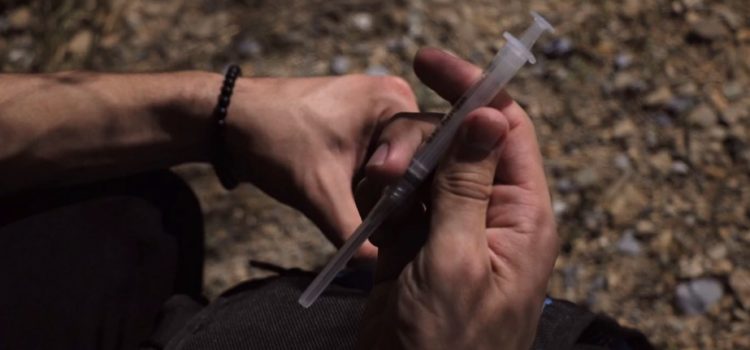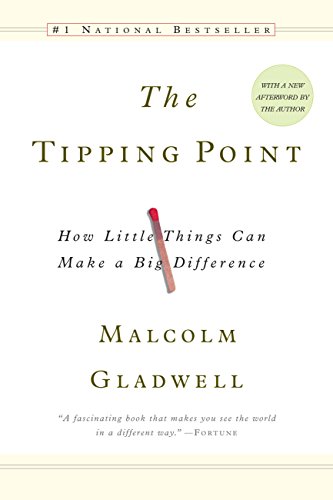

This article is an excerpt from the Shortform summary of "The Tipping Point" by Malcolm Gladwell. Shortform has the world's best summaries of books you should be reading.
Like this article? Sign up for a free trial here .
What are clean needle exchanges? Do they work in combatting HIV/AIDS?
We’ll cover the effectiveness of clean needle exchanges in Baltimore and look at how they utilize the diffusion model to increase access to clean syringes and lower HIV rates.
Distributing Clean Needles to Drug Users
Are clean needle exchanges effective in combating AIDS? The City of Baltimore distributed clean syringes to inner-city neighborhoods in an effort to combat AIDS, which was spreading through the reuse of dirty needles among drug users. But their effort was limited by a few factors.
- A van distributed clean needles in specific locations on certain days of the week. But if drug addicts did not meet this schedule, they missed the opportunity.
- Heroin addicts tend to go through a lot of needles, so they were likely to run out of their supply of clean syringes if they only restocked from the van once a week.
Researchers who were assessing the program’s success assumed that drug users who were using the program would take a grocery-shopping approach and visit the van during its scheduled stops to stock up on enough clean needles for the week. Instead, they discovered something surprising: A small group of drug users was each grabbing hundreds of clean needles from the van every week, then selling them to addicts in the streets.
City officials initially had misgivings about this unintended effect, which gave these so-called super-exchangers a way to fund their own drug addictions. However, they soon realized the super-exchangers were acting as translators: They could provide clean needles to addicts around the clock and in any location, responding to the need better than the city could on its limited route and schedule. The super-exchangers were Connectors, who knew a lot of people in the drug community, and translators, who bridged the divide between the city’s efforts and the drug users’ behavior.
Clean Needle Exchanges and the Diffusion Model
Translation as in the case of clean needle exchanges in Baltimore can also take the form of communication to spread a message or idea, rather than the form of an action to spread a product or service.
The diffusion model is a term in sociology for the way a contagious idea or product spreads among people who adopt it at different phases.
- First, the Innovators take hold. Innovators are a fairly small group of more adventurous people or companies who are willing to take the risk and go out on a limb to try this idea.
- Then, the Early Adopters join in. They are also risk-takers, but slightly less so. Early Adopters are respected, thoughtful opinion leaders who observed the Innovators before taking the plunge themselves.
- After the Early Adopters, the masses jump on board in two waves: the Early Majority and the Late Majority. These majorities are more cautious and skeptical to try something new until the well-respected Early Adopters test it out.
- Finally, the Laggards join just as the swell of the epidemic falls off. Laggards are slow to adopt new innovations because they see no reason to change; why fix what’s not broken?
Different factors come into play each time an idea or product advances to the next group of adopters, because each group’s attitude and reasoning for adoption is different. Both Innovators and Early Adopters have a revolutionary mindset and are inherently open to innovations that will give them an edge, despite considerable risk. In the case of the clean needle exchanges in Baltimore, the Innovators and Early Adopters were the drug users who sold clean needles to others.
- In a market setting, these are small companies who are willing to take big risks and try new ideas or products before they have been proven or before their prices have dropped.
However, before an idea or product moves from the Early Adopters to the Early Majority, a gap must be bridged; the fundamental difference in the visionary attitude of Early Adopters versus the caution of the Early Majority creates a chasm where would-be epidemics can fall off. This is where the Law of the Few becomes critical: Connectors, Mavens, and Salesmen can act as translators to make the seemingly revolutionary actions of the Innovators and Early Adopters attractive to the more mainstream and traditional majorities. In the case of clean needle exchanges in Baltimore, the sellers were also the connectors, mavens, and salesmen.
- In a market setting, the Early Majority would be the big companies that have a more complex and established workflow that needs to be adjusted to accommodate new innovations. These companies will take the extra time to build safety nets and manage risks if they decide to adopt a new technology.
Translating Messages, Products, and Services
In general, most people naturally resist change and innovation in favor of what’s familiar, comfortable, and working well enough. A much smaller population (the Innovators and Early Adopters) give an idea or product its kickstart, but the masses ultimately must get on board for an epidemic to take hold. This was the case with the Baltimore clean needle exchange program. This is where translation is necessary to make new ideas or products more palatable and bridge the gap between the risk-takers and the rest of us.
Connectors, Mavens, and Salesmen each use their strengths differently to translate messages in a way that they take on a deeper meaning to the people receiving the message (thus making it stickier).
- As members of so many different worlds, Connectors are able to act as an intermediary in translating ideas from one community to another.
- Mavens’ extensive knowledge and detailed understanding of (sometimes complex) topics allows them to adeptly explain information to people with less or no expertise.
- Salesmen use their nonverbal abilities and ability to connect emotionally with people to make information and ideas more relatable.
In the case of Baltimore’s clean needle exchange program, drug users selling to others actually made clean needles more accessible to a wider population of drug users.
———End of Preview———

Like what you just read? Read the rest of the world's best summary of "The Tipping Point" at Shortform . Learn the book's critical concepts in 20 minutes or less .
Here's what you'll find in our full Tipping Point summary :
- What makes some movements tip into social epidemics
- The 3 key types of people you need on your side
- How to cause tipping points in business and life






